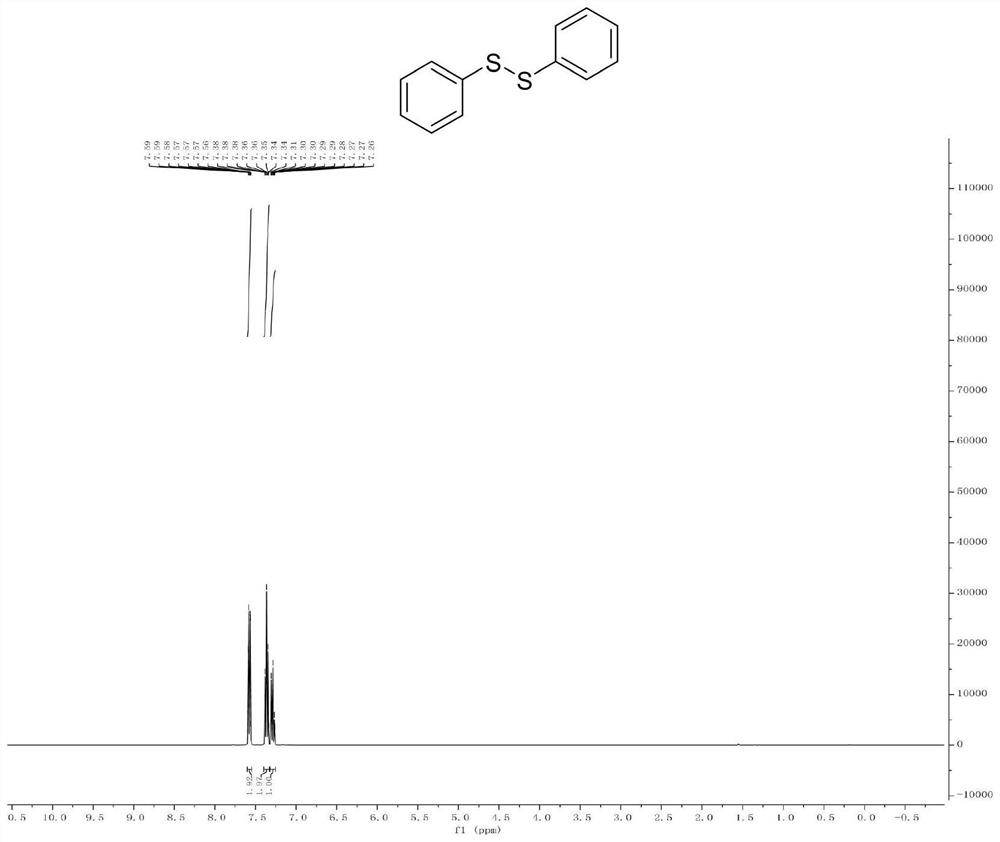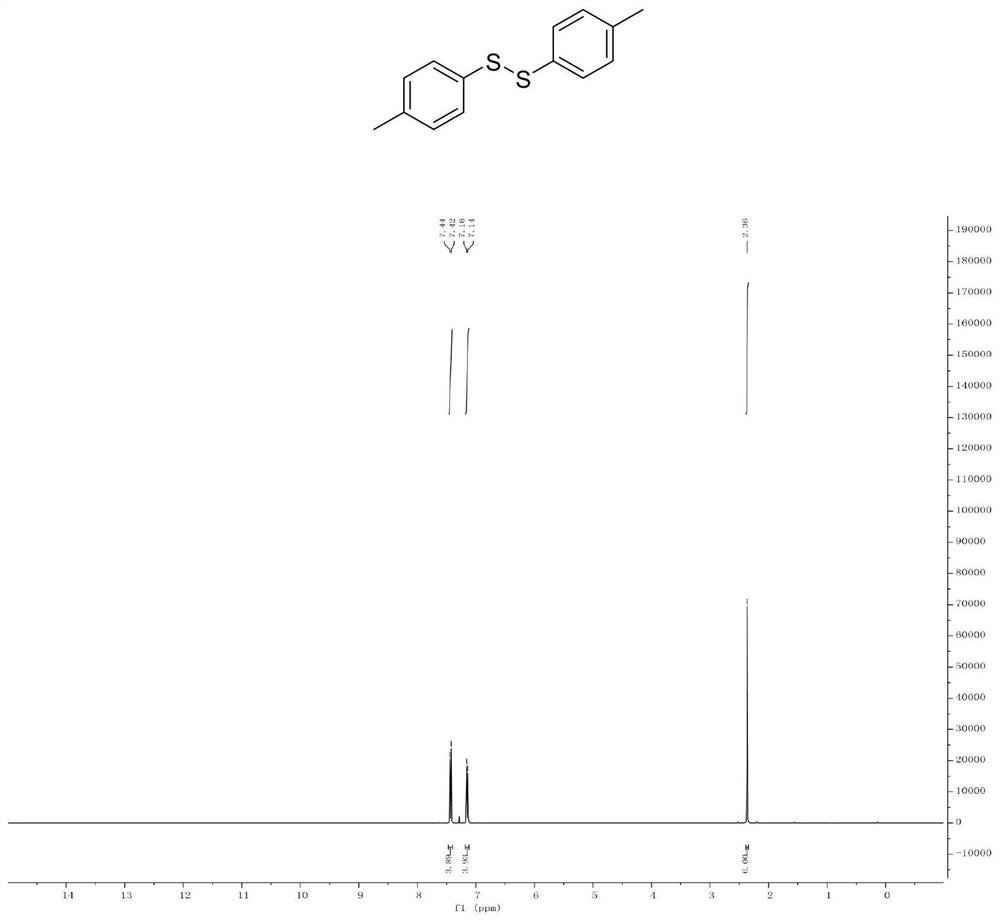Preparation method of diphenyl disulfide compounds
A technology of diphenyl disulfide and compounds, which is applied in the field of preparation of high-purity organic intermediates, can solve the problems of large environmental pollution, high requirements for reaction conditions, and long synthetic routes, and achieve pollution reduction, improved reactivity, and synthetic routes. short effect
- Summary
- Abstract
- Description
- Claims
- Application Information
AI Technical Summary
Problems solved by technology
Method used
Image
Examples
Embodiment 1
[0038] Example 1. Synthesis of diphenyl disulfide
[0039]
[0040] Add 100 mL of tetrahydrofuran to a pre-dried reaction flask filled with nitrogen (or argon), cool the mixture to -78°C, then add iodobenzene (0.1 mol), and slowly add isopropyl Magnesium chloride (0.11mol), the reaction solution was stirred at -78°C to -20°C, and the reaction progress was monitored by gas chromatography. After about 30-90 minutes, the halogen-magnesium exchange reaction was completed. Then dichlorodisulfur (0.05mol) was added to the reaction system, and the reaction solution was slowly raised to room temperature, and the reaction was quenched with saturated ammonium chloride solution, and the organic phase was extracted with ether or ethyl acetate, and dried with anhydrous magnesium sulfate The organic phase was concentrated and the organic phase was concentrated to obtain 9.7 g of white solid diphenyl disulfide with a yield of 89% and a purity of ≥95%. figure 1 Be the synthetic diphenyl ...
Embodiment 2
[0044] Example 2. Synthesis of p-methyldiphenyl disulfide
[0045]
[0046] Add 100 mL of tetrahydrofuran to a pre-dried reaction flask filled with nitrogen (or argon), cool the mixture to -78°C, then add p-methyliodobenzene (0.1 mol), and slowly add Isopropylmagnesium chloride (0.11mol), the reaction solution was stirred at -78°C to -20°C, and the reaction progress was monitored by gas chromatography. The halogen-magnesium exchange reaction was completed after about 30-90 minutes. Then dichlorodisulfur (0.05mol) was added to the reaction system, and the reaction solution was slowly raised to room temperature, and the reaction was quenched with saturated ammonium chloride solution, and the organic phase was extracted with ether or ethyl acetate, and dried with anhydrous magnesium sulfate Concentrate the organic phase to obtain 10.8 g of p-methyl diphenyl disulfide as a yellow solid, with a yield of 88% and a purity of ≥95%. image 3 It is the p-methyl diphenyl disulfide s...
Embodiment 3
[0051]Example 3. Synthesis of p-Methoxydiphenyl Disulfide
[0052]
[0053] Add 100 mL of tetrahydrofuran to a pre-dried reaction flask filled with nitrogen (or argon), cool the mixture to -78°C, then add p-methoxyiodobenzene (0.1 mol), and slowly add to the reaction liquid droplet Add isopropylmagnesium chloride (0.11mol), and stir the reaction solution at -78°C to -20°C, and monitor the progress of the reaction by gas chromatography. After about 30-90 minutes, the halogen-magnesium exchange reaction ends. Then dichlorodisulfide (0.05mol) was added to the reaction system, and the reaction solution was slowly raised to room temperature, and the reaction was quenched with saturated ammonium chloride solution, and the organic phase was extracted with ether or ethyl acetate, and dried with anhydrous magnesium sulfate Concentrate the organic phase to obtain 12.7 g of light yellow solid p-methoxydiphenyl disulfide with a yield of 91% and a purity of ≥95%. Figure 5 It is the p...
PUM
 Login to View More
Login to View More Abstract
Description
Claims
Application Information
 Login to View More
Login to View More - R&D
- Intellectual Property
- Life Sciences
- Materials
- Tech Scout
- Unparalleled Data Quality
- Higher Quality Content
- 60% Fewer Hallucinations
Browse by: Latest US Patents, China's latest patents, Technical Efficacy Thesaurus, Application Domain, Technology Topic, Popular Technical Reports.
© 2025 PatSnap. All rights reserved.Legal|Privacy policy|Modern Slavery Act Transparency Statement|Sitemap|About US| Contact US: help@patsnap.com



